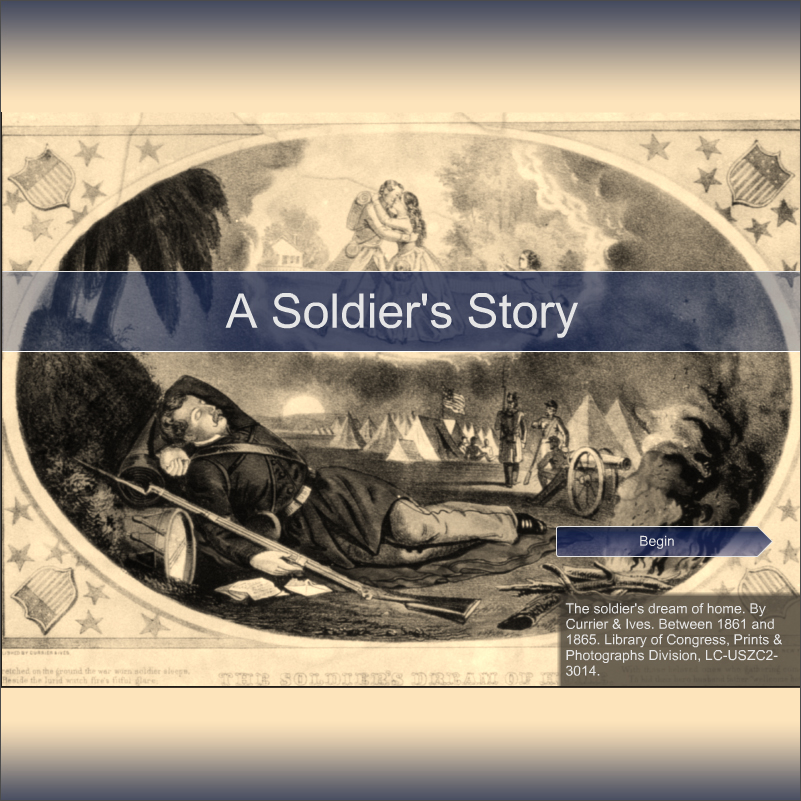“The Night Before the Battle,” an oil painting by James Henry Beard, was created near the end of the American Civil War. How do we begin to know what it felt like to be a soldier in that war? The artist, who was a soldier in the Union Army, paints a grim picture that helps us understand. How was this painting understood in 1865? How is our understanding different now? Solve a series of riddles and come to see the painting more as a viewer in 1865 might have understood it. Learn what it might have been like to have been a soldier fighting on either side of the Civil War, and see the context in which Beard painted this charged and enduring work.”
NOTE: Since these pieces are currently being prepared for installation on the MAG web site in a staging site on the IGM server and are not yet ready for public release, they are in password protected directories until release.
1. Scavenger hunt for clues in the painting to discover the contents of a letter from a officer in the painting to his wife and his commanding officer after the battle, this game encourages a player to examine the painting closely to find the many clues that were embedded in the painting to provide a narrative about the battlefield conditions of soldiers in a fortification awaiting a battle the next day.
2. Interactive timeline of Civil War history (political and military events) in conjunction with the life events and works of James Henry Beard) and American art from the civil war era in the MAG collection, this was intended to provide linkage between this and other paintings and the event of the American Civil War so that middle school teachers could use art to motivate a study of American history.
3. A Soldier’s Life (civil war soldier) interactive narrative – an attempt to make the lives of the soldiers depicted in the painting (and soldiers on the Confederate side) more concrete and to provide historical context and perspective in which to understand the painting, a user makes a series of choices the consequences of which determine the personal outcome of the civil war by picking sides (Union vs. Confederate), personal background (farmer, city dweller, freed slave) and other decisions that faced enlisted and drafted soldiers:
Sincere Thanks to the following MAG Personnel for making this work (and other projects below) possible:
Susan Dodge-Peters Daiss, former McPherson Director of Education, currently Senior Associate, Division of Medical Humanities and Bioethics, URMC/MAG
Marlene Hamann-Whitmore, McPherson Director of Education
Lu Harper, Art Librarian and Webmaster
Marjorie Searl, former Chief Curator (retired)
